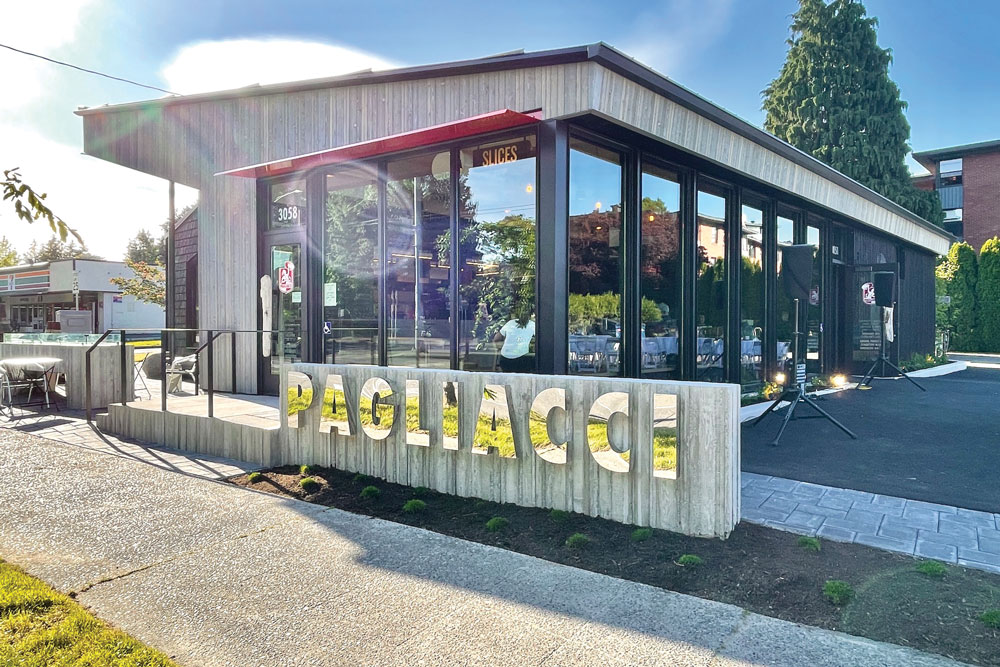Andrew Simmons has been conducting a bold experiment at Mamma Ramona’s Pizzeria in Ramona, California: Just how fast and how far can a little-known concept grow using the ghost-kitchen model and cutting-edge technologies?
Pretty darn fast and pretty darn far, as it turns out.
Simmons took over a revered Ramona pizza institution, then called Mamma Rosa’s, in 2020. Ever since, he has been implementing a strategy that, if successful, will likely inspire copycats around the country: small footprint, speedy pizza output, robots, annual subscriptions, even a revenue-sharing program for subscribers that offsets their cost for signing on.
Pizza Power Report 2024: How the leading chains are using AI to sell more pizza
Simmons opened his second Mamma Ramona’s store in early December in Oceanside, California, and a third store opened on December 21 in Philadelphia. Yes, Philadelphia, all the way on the other side of the country. It’s a gutsy move for a brand that can’t count on name recognition alone, but no one has ever accused Simmons of lacking ambition.
His ultimate goal: to “build the world’s smallest pizzeria [while] maximizing the revenue per square foot of space.”
Simmons has been sharing his journey of innovation in detailed posts on LinkedIn, and it makes for fascinating reading—and potentially a master class in pizzeria growth and innovation.

Photo by Heather Winters
In one unusual move in early December 2023, Simmons relocated the original Mamma Ramona’s—which occupied a 5,000-square-foot space—into a much smaller spot on Ramona’s Main Street that’s around 765 square feet. After all, when 85% of your business is delivery and carryout, who needs all that room?
So far, it’s paying off: According to the Ramona Sentinel, business has nearly tripled for Mamma Ramona’s since the move.
The compact new space provides just two tables for dine-in; most of it is devoted to the kitchen and a grab-and-go slice station. He’s also testing a fast-baking conveyor oven. “I’ll wait to see if it’s true—they tell me it will cook a pizza in a minute and a half at 1,200°,” Simmons told the Ramona Sentinel.
As Simmons explained in a recent LinkedIn post, “There are a lot of things different about this new space—the rent and utilities are $8K less a month; this location is on the main thoroughfare and not set back a block; and it’s built for automation, although I’m rethinking parts of it, with the Dragon Stone Conveyor oven on a truck [coming] to us now.”
Pizza Power Report: The 25 most critically acclaimed pizzerias in the U.S.
He’s also awaiting the arrival of a Picnic pizza-making robot that will sauce, cheese and top his pies.
But in the meantime, he’s not sitting on his thumbs. The newly opened Philadelphia store will be followed by a fourth store in Charlotte, North Carolina, coming in early 2024. Each one will be located in a CloudKitchens facility alongside other restaurant concepts. “It allows us to focus on making great food and not have a lot of overhead,” Simmons explained to the Ramona Sentinel. “It’s like a shared overhead space so we might have 10 to 15 other kitchens in that shared location with a common front counter.”
Plans also call for CloudKitchens locations for Mamma Ramona’s in Los Angeles, San Diego and Tempe, Arizona.
Meanwhile, Simmons has high hopes for his $199 annual pizza subscription program. “Now, selling subscriptions that offer a 12” cheese or pepperoni pizza at roughly $4 each would seem like a fool’s errand,” he wrote on LinkedIn. “But, through automation, we’ve driven that cost down to under $2.65 each for labor, ingredients, cook costs and equipment amortization. It fluctuates a little based upon the block cheese price. The other selling point for us is the redemption rate of 44%. That’s 23 pizzas a year on average.”
Why the relatively low redemption rate? “I have several theories about it, but I think it boils down to this: Pizza is great, but not every week, and it’s like a gym membership purchased on New Year’s Day: lots of use initially but over time, less frequently. It evergreens, too, so a year later, another big cash infusion.”
Weirdly enough, fast turnaround on pizza orders has its drawbacks, as Simmons noted in one LinkedIn Post. “I did get a one-star review on Ovation from a customer who didn’t believe us when we said the order would be ready in 15 minutes, so they showed up 45 minutes later—’like always.’”













